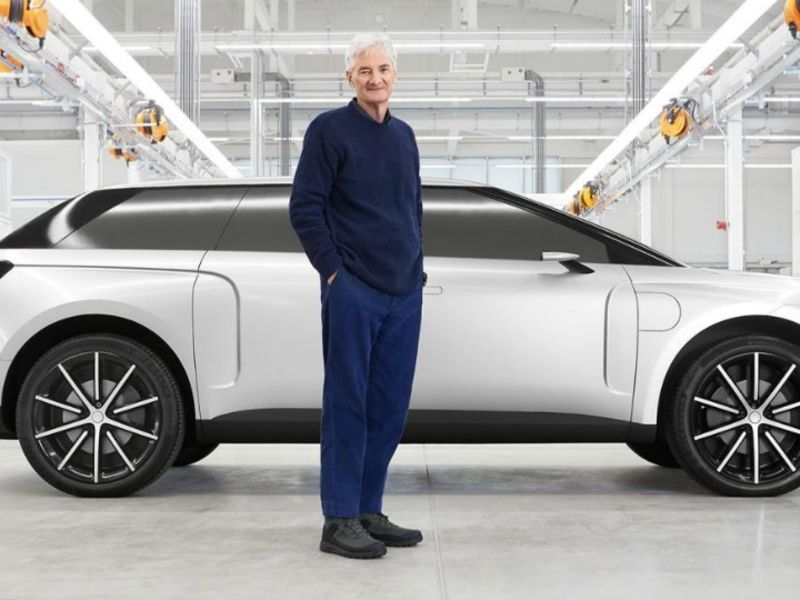
LONDON — British inventor and entrepreneur James Dyson said he killed off his electric car project after it became clear he would have to charge over 150,000 pounds ($181,885) for the vehicle to make a profit on it
The billionaire businessman said in 2017 that he planned to develop and sell an EV by 2021, creating anticipation that he might shake up the car industry the same way as he had disrupted the household appliance market with his bagless vacuum cleaner.
Dyson canceled the car last year, saying the project was being scrapped because it was not commercially viable, not because of any failures in research and development.
In his first public comments since the cancelation, Dyson told the Sunday Times that the project cost him 500 million pounds ($607 million) of his own money. “There’s huge sadness and disappointment. Ours is a life of risk and of failure. We try things and they fail,” he said in an interview published on Sunday.
Dyson, 75, is Britain’s richest man, with a worth of 16.2 billion pounds, according to the Sunday Times.
Dyson had hired talent from across the industry for the project, including former BMW and Infiniti executive Roland Krueger. He planned to invest 2.5 billion pounds to develop the car and build it in a new factory in Singapore.
The Sunday Times interview included a profile picture of a seven-seat SUV that Dyson was developing, as well as its minimalist interior.
The specifications reveal that the closest direct rival to the car would have been the Tesla Model X SUV.
The Dyson EV, codenamed N526, was to be almost identical in size to the Model X at 5000mm long, 1700mm tall and 2000mm wide. The car’s 2,600 kg weight was almost identical to the long version of the Tesla Model X.
Dyson claimed its driving range on a single charge was 600 miles (966 km). The Model X has a range of 314 miles as measured on the WLTP cycle. Dyson did not disclose the range testing method for his car.
The Dyson car would have used cylindrical lithium ion batteries, likely very similar to the batteries used by Tesla cars. Dyson did not reveal the battery size.
Twin electric motors would have produced a combined 536 hp and powered the car from 0 to 100 kph (62 mph) in 4.8 seconds, with a top speed of 200 kph (125 mph).
In the Sunday Times interview Dyson said established premium automakers such as BMW, Mercedes-Benz Audi are selling their electric cars at a loss. “When we started in 2014, we had good technology and a very efficient car with a long range. It was viable. But when, later other companies started production electric cars at a loss it became too risky for us,” he said.
The reason they are selling at a loss is to reduce average CO2 levels across their fleet and avoid European Union fines, he claimed. “I don’t have a fleet. I’ve got a make a profit on each car or I would jeopardize the whole company. In the end It was too risky,” he said.
The 150,000-pound price, while expensive, is not too far from that of high spec versions of the Model X, which can cost from over 120,000 pounds including optional extras.
The interior of the car highlights Dyson’s interest in improving car seats, which in his model are ribbed with a focus on side-support. “I hate those armchair-style seats you sink into,” Dyson said of conventional car seats.
Much of the dashboard information in the Dyson model would have been displayed as a hologram, possibly a version of the traditional head-up display.
Dyson hinted that he could market the company’s solid-state batteries to automakers when the batteries are ready. “Other people are developing solid state batteries. We may be the first. If what we are doing turns out to be suitable for other people, then that’s an option,” he said.
Dyson originally planned to fit solid-state batteries into later versions of his electric cars after starting with lithium ion. The company bought solid-state battery maker Sakti3 in 2015 but wrote off much of the investment in 2018. Dyson is still developing the technology, which promises a more energy dense battery with less need for cooling.
Dyson also did not rule out building another car. “I would not say no, but the commercial circumstances would have to be to right. The garage door never closes,” he said.
Many of the 500 people employed to develop the car have been found jobs elsewhere in the company, Dyson said.